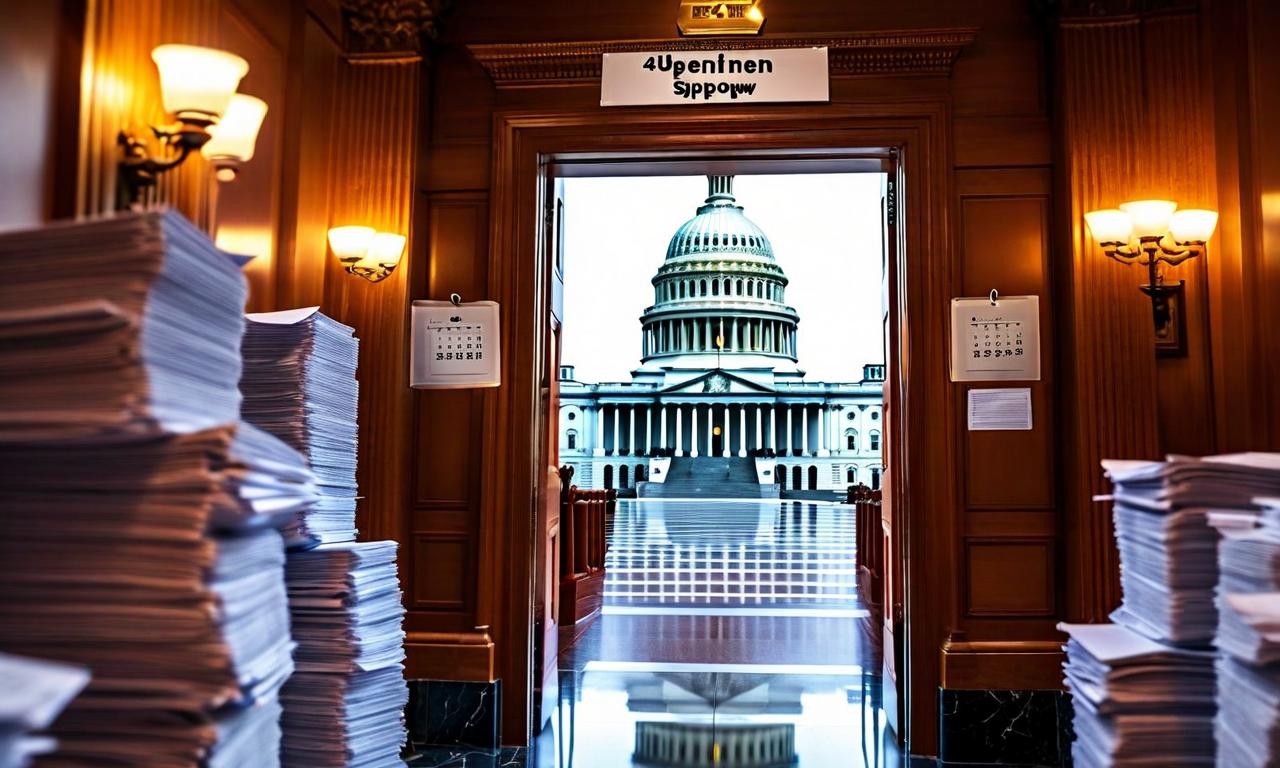US Government Shutdown Ends After 42 Days, Economic Data Releases Anticipated
The United States has ended its 42-day government shutdown, the longest in history. The House of Representatives voted 222-209 to approve a deal, following Senate passage. The shutdown, which began on October 1, left thousands of federal workers without pay and halted many federal services. The new legislation funds the government through January 30 and increases the annual debt by approximately $1.80 trillion, bringing the national debt to $38.00 trillion. The end of the shutdown will allow for the release of delayed economic data, which may impact upcoming Federal Reserve decisions.

*this image is generated using AI for illustrative purposes only.
The United States has emerged from its longest government shutdown in history, lasting 42 days. The House of Representatives voted 222-209 to approve a deal that had already passed the Senate, effectively ending the fiscal impasse that began on October 1.
Impact on Federal Workers and Services
The prolonged shutdown had significant consequences:
- Thousands of federal workers were left without pay
- Many federal services were halted
With the passage of this bill, federal workers will receive their restored pay, and key programs such as food assistance will resume operations.
Financial Implications
The new legislation comes with substantial financial implications:
| Aspect | Details |
|---|---|
| Government Funding | Through January 30 |
| Annual Debt Increase | Approximately $1.80 trillion |
| Current National Debt | $38.00 trillion |
Economic Data Release Expectations
The end of the shutdown will allow for the release of crucial economic data:
- Morgan Stanley economists anticipate the September non-farm payrolls report to be released within days
- Unemployment data may face delays due to the household survey not being conducted during the shutdown
Potential Impact on Federal Reserve Decisions
The Federal Reserve's upcoming meeting on December 9-10 may be affected by the lack of certain economic indicators:
- October inflation data
- Consumer spending figures
- Retail sales information
The absence of this data could potentially influence the Fed's decisions regarding interest rates.
Conclusion
As the government resumes full operations, the focus now shifts to the release of delayed economic reports and their potential impact on future policy decisions. The coming weeks will be crucial in assessing the full economic aftermath of this historic shutdown.




























